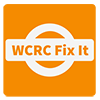WCRC typically draws from five main funding sources which are described in greater detail below. There are many more sources of funding available under limited circumstances. Certain types of funding can only be spent on specific road or bridge projects, and unpredictable events (such as bad winters) can use up funding that could have been spent on summer road maintenance and construction. Click here to read WCRC’s latest budget.
The Michigan Transportation Fund (MTF)
WCRC’s largest source of revenue comes from the state, primarily from fuel taxes and vehicle registration fees. The revenue generated from fuel taxes and vehicle registration fees is placed into the Michigan Transportation Fund (MTF) and the funds are distributed by formula to the Michigan Department of Transportation (MDOT), counties/county road commissions, cities, and villages. WCRC received approximately $32.25 million in MTF funds in 2021.
Federal Funding and Grants
Another source of funding is federal transportation funding and grants. WCRC must apply for grants with a certain project in mind. There are different grants for specific types of projects, these grants are typically federal funds, administered by the Michigan Department of Transportation (MDOT). Examples include bridge replacements, congestion mitigation, guardrail and intersection safety. Click here to see a summary of the grants that WCRC has applied for the current and future construction seasons.
County Millages
In August 2020, Washtenaw County voters renewed the County-wide Four-Year Roads and Non-motorized Millage. Funds collected through this .5 mill tax are collected each year and applied directly to road and non-motorized projects the following construction season. WCRC receives approximately $4 million per year from this millage. Click here to learn more about county-wide millages.
Contributions from Townships
While state and federal funds provide a majority of WCRC’s revenue, these funds generally go towards the improvement of primary roads, not local roads. (Click here to see certification maps showing primary roads and local roads).
Local roads makeup 64% of WCRC’s road network (over 1,000 miles), including most subdivision roads. The amount of state funding allocated towards local roads is often only enough to fund winter maintenance and pothole patching. By law, any improvements beyond this routine maintenance, such as resurfacing or ditching, on local roads must be matched by a source other than WCRC, typically a township. Annually, WCRC offers each township matching funds through the Local Road Matching Program to promote partnership and encourage investment in local roads. Historically, townships invest $5-7 million annually in the road network. Click here to learn more about the township’s role in road funding.
Special Assessment Districts (S.A.D.)
Another tool to fund local road improvements are Special Assessment Districts (SAD.). An SAD. is a designated area where a majority of property owners agree to allow a government agency to levy a special property tax to improve a public road. If approved, WCRC or the local municipality will front the cost of the road improvement and property owners agree to pay the cost over a period of years. Click here to learn more about SADs.
State Trunkline Maintenance Contract
The Michigan Department of Transportation (MDOT) hires WCRC to maintain state highways within the county. State highways are routes designated with an I, M, or a US, such as I-94, M-14, and US 23. MDOT reimburses the WCRC for the cost of maintenance on these routes.


